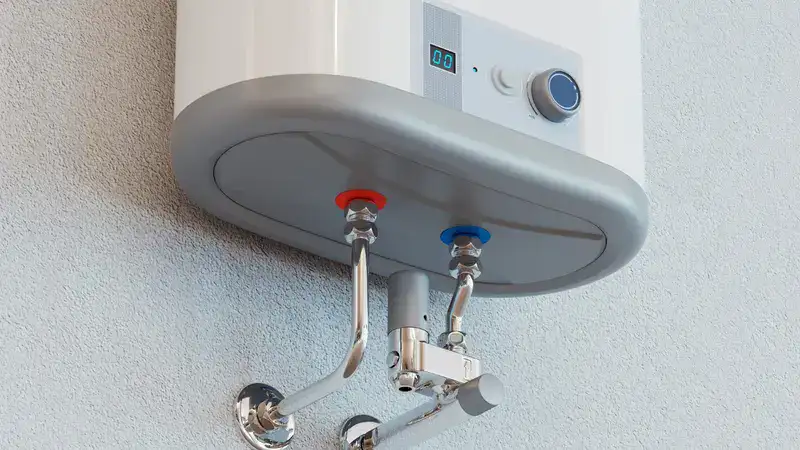Finding the best installation materials and hangers for industrial use means considering the type of pipe, application needs, and long-term durability. Each project is unique, but choosing materials suited for the job can prevent future issues, reduce maintenance, and support safe pipe operation.
Industrial installers benefit from working with a leading online supplier of installation materials and hangers to easily access a wide selection of blades, lubricants, saw guides, hangers, and accessories. This makes it simpler to match parts to project requirements and helps keep every installation both safe and efficient.
By picking the right products from trusted sources, industrial professionals can complete their jobs with more confidence. The right choices now can help avoid downtime, leaks, and costly repairs in the future.
Choosing Appropriate Installation Materials
Selecting installation materials for industrial jobs means looking at factors like durability, environment, and the special needs of each application. Making the right choices can save time, lower maintenance, and help prevent expensive repairs.
Assessing Application Requirements
Every industrial project has different needs based on what it moves, supports, or holds. The size and weight of pipes, cables, or other equipment play a role in what materials to use.
List items to consider for assessment:
- Load capacities
- Type of fluids or energy moving through the system
- Expected operating temperatures
- Vibration and movement in the system
Materials should match the stress and strain expected in the application. The installation must safely handle the everyday pressures without early failure.
Comparing Material Durability and Strength
Different materials, such as steel, plastic, and copper, offer various levels of durability and support strength. Steel tends to support heavier loads, while plastics may be lighter but less rigid.
Material Comparison Table:
| Material | Strength | Weight | Lifespan (avg) | Cost |
| Steel | High | Medium | Long | High |
| Plastic | Low | Light | Medium | Low |
| Copper | Medium | Light | Long | Medium |
The best option is the one that aligns with the system’s demands and fits the project’s budget. Material fatigue and expected wear should be part of the decision.
Evaluating Resistance to Environmental Factors
Industrial sites can expose materials to moisture, heat, cold, chemicals, or UV light. Some metals may corrode if not coated, while certain plastics could become brittle in cold conditions.
Checklist for environmental review:
- Is there salt or moisture that may lead to corrosion?
- Will the material face high or low temperature swings?
- Are there chemicals or oils that could break down the material?
- Will sunlight or indoor lights cause fading or cracking?
Choosing a material with the right resistance helps avoid damage, increases service life, and maintains safety standards.
Selecting Materials for Specialized Industrial Needs
Specific industries may need materials that meet fire codes or medical standards. Chemical plants often pick materials safe against chemical reactions, while food processing may need sanitary-grade surfaces.
When special needs are present, consider:
- Compliance with industry or safety standards
- Ability to meet inspection and testing rules
- Special coatings or treatments for extra protection
Teams should match installation materials to both the process demands and any rules that apply for that industry. This keeps both equipment and people safe over the long run.
Selecting the Best Hangers for Industrial Applications
Choosing the right hangers in industrial settings involves matching the hanger type to the pipe material, load requirements, and environmental conditions. Attention to proper sizing, spacing, and secure installation helps protect pipes and maintain safety over time.
Types of Industrial Hangers
Industrial hangers come in different shapes, sizes, and materials. The main types include clevis hangers, which cradle pipes from below, J hangers for horizontal runs, and pipe clamps for a tighter hold.
Each hanger type serves a specific purpose. Clevis hangers are often used for suspended pipes. J-hangers work well for lighter horizontal piping. Pipe clamps provide extra grip for systems that need more stability.
Materials range from galvanized steel, stainless steel to plastic. Metal hangers suit most heavy pipes and hot systems. For corrosive environments, stainless steel is a better option due to its resistance to rust and chemical damage.
Load Capacity Considerations
Load capacity is one of the first things to check when picking hangers. The weight of the pipe, including what flows inside, must not go beyond the hanger’s rated limit. Going over these limits might lead to hanger failure and pipe damage.
It’s important to know both the static weight and any possible movement, such as vibration or thermal expansion. Hangers are rated for specific weights, so always match the capacity to the heaviest load expected during use.
Oversized hangers don’t always mean added safety—they can cause sway or improper alignment. Match the size and strength closely to the pipe’s needs. Use a table to compare weight ratings and choose the proper model for each section of the system.
Installation Methods and Best Practices
Proper installation makes a big difference in safety and system life. Hangars should be spaced according to manufacturer guidelines, which usually depend on pipe size, weight, and material. Proper spacing prevents sagging and uneven weight distribution.
When securing hangers, avoid over-tightening since this could crush or bend the pipe. Always check for damage or defects on both the pipe and the hanger before installation. Alignment matters—pipes should remain straight without extra stress on joints.
Routine inspection after installation helps catch early signs of wear, rust, or loosening. Following these practices reduces the risk of leaks or breakdowns in industrial systems.
Conclusion
Selecting the best installation materials and hangers depends on pipe type, weight, and placement. Industrial systems function more effectively when the right size and design are selected for the specific task.
Materials should be matched to the environment and load, while hanger types such as clevis, J hangers, or hanger straps are useful for different pipe arrangements.
Key steps to remember:
- Check pipe material (PVC, copper, steel)
- Measure pipe size and expected load
- Pick hangers and supports designed for the layout
The right combination improves safety and reduces maintenance needs. Focusing on these basics helps create a stable and long-lasting installation. Get in touch with us for more details.



